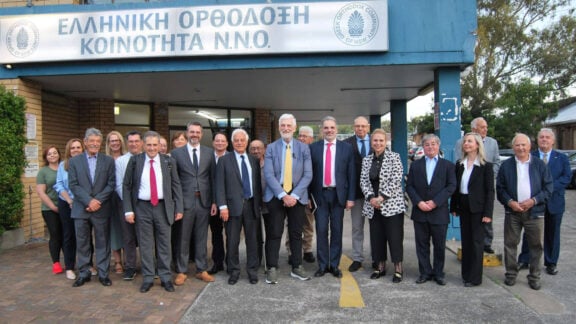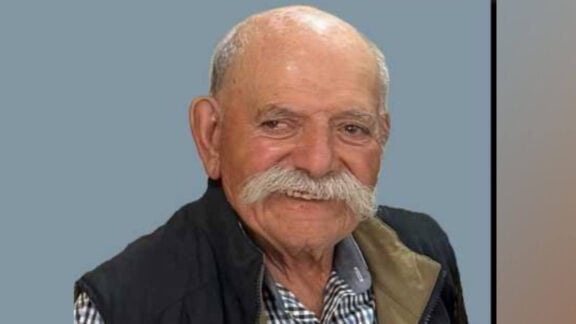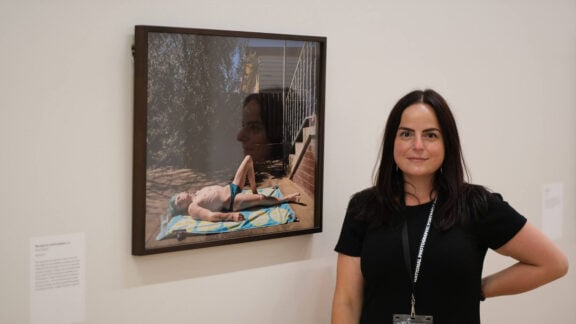One of the prolific car designers of the modern era, Sir Alec Issigonis, better known as the chief designer of the British Motor Corporation (BMC) and creator of the Mini and Austin/Morris 1100.
Born 1906, Alexandros Constantinos Issigonis to a Greek/British family in Smyrna (Izmir) on the Aegean Sea in Turkey. His father and grandfather were both engineers and owned a boiler-making factory but lived under house arrest during World War One when Germany controlled the city.
After his father died, his mother, Hulda, the daughter of a Bavarian brewer took him to England at the age of 16 to study and in 1925, he enrolled in a three year engineering course at Battersea Polytechnic. Young Alexander Issigonis failed his maths exam three times but excelled at drawing and afterward commenced working in Britain’s auto industry.
Issigonis competed in motor racing usually winning most events he entered into and 1939 worked with George Dowson, on a hand-built racing car, the ‘Lightweight Special’. It was built without the aid of power tools and was made of plywood laminated in aluminium sheeting, had an advanced trailing arm front suspension attached to a steel cross-member and a swing-axle rear with rubber springs made of catapult rubber. The car and engine combined weighed in at just 266 kg. By the time the chassis had been completed, Issigonis had moved to Morris, however Austin supplied him a “works” specification supercharged side-valve engine. Issigonis successfully raced until the demands of his job forced him to stop in 1948.
Alexander Issigonis was an outspoken and eccentric person who once said that his approach to car design was to never copy the opposition . He was dismissive of market research and at one time described mathematics, as ‘the enemy of creative genius’.
His lateral approach to the design and engineering of cars ensured his legendary status, despite the constraints of working in a capitally intensive industry where the most dominating designers were often only members’ of a larger development team. From the 1948 Morris Minor to the 1959 Mini Minor the Issigonis’ cars bore his own totally distinctive design.
He worked for Morris on various projects throughout the Second World war and towards its end started designing an advanced post war car codenamed the ‘Mosquito’ that was later the Morris Minor. Initially William Morris, by then Lord Nuffield, was furious when he saw the final design and nicknamed it ‘the poached egg’, but it gradually won the hearts of British motorists and remained in production until 1971 as the Issigonis’ influenced steering and suspension made it so easy to drive.
In 1952, just as BMC was formed by the merger of Morris and Austin, he moved to Alvis Cars where he designed an advanced sedan with an aluminium V-8 engine, (predecessor to the Leyland 4.5litre P76 unit) and with interconnected independent suspension systems (as in the Tasman and Kimberly). This prototype was never manufactured because its cost went beyond Alvis’ financial and infrastructure resources.
When Alvis dropped the project, Issigonis was invited by Sir Leonard Lord to return to BMC where he was to forge a close rapport with Jack Daniels, the draughtsman who transferred his concept sketches into technical drawings and working prototypes.
BMC wanted to combat the increasing imports of inexpensive ‘topolino’ type cars (little mouse Fiat 500) from Europe and gave Issigonis a mission to produce a compact car to carry four adults and a boot full of luggage no bigger than 1.3 Meters wide, 3 Meters long and 1.2 Meters high. Issigonis went on to design the revolutionary Mini.
His creation was introduced as a new concept in British automobile design, with the North/South location of the engine changed to an East/West configuration saving so much space that it was possible to accommodate 4 adults. Sliding windows allowed for thinner doors which also helped with the over all width.The transverse engine shared the same oil with the gearbox placed inside the engine sump. The independent front suspension consisted of rubber cone spring units; the upper and lower arms being attached to swivel pin hubs by ball joints. Independent rear suspension was also by rubber cone spring units on radius arms.
The car’s design with its front wheel drive and independent suspension provided good road handling, but Issigonis had scant regard for passenger comfort. He despised such “luxuries” as radios and comfortable seats. Launched in 1959, the Mini soon became the best-selling car in Europe and was swiftly hailed as an early 60’s icon. Among the 5 million Minis manufactured by BMC, many were bought by celebrity owners, including the Beatles, Peter Sellers, Dudley Moore and Steve McQueen. The little car’s most celebrated screen debut was its multiple use as a getaway car in the 1969 film, The Italian Job.
The racing potential of the Mini was noted early on by the racing car developer John Cooper who transformed the car into high performance competition vehicle, 4 times winner of the Monte Carlo Rally (64 -67) and 1966 Bathurst 1000 winner. World Formula 1 Champions, James Hunt, Jackie Stewart and Niki Lauda all started their racing careers in Mini-Coopers.
Sir Alec Arnold Issigonis was knighted in 1969 but continued to work as engineering director at Austin Morris until 1971 when he retired. An uncompromising individualist, Issigonis is credited with having said ‘a camel is a horse designed by committee’. He was an independent thinker who despised convention, and would not take any advice believing that what he designed was good enough for everybody. Sir Alec Issigonis, often referred to as the Greek god by his contemporaries, died in October 1988 at the age of 81.








